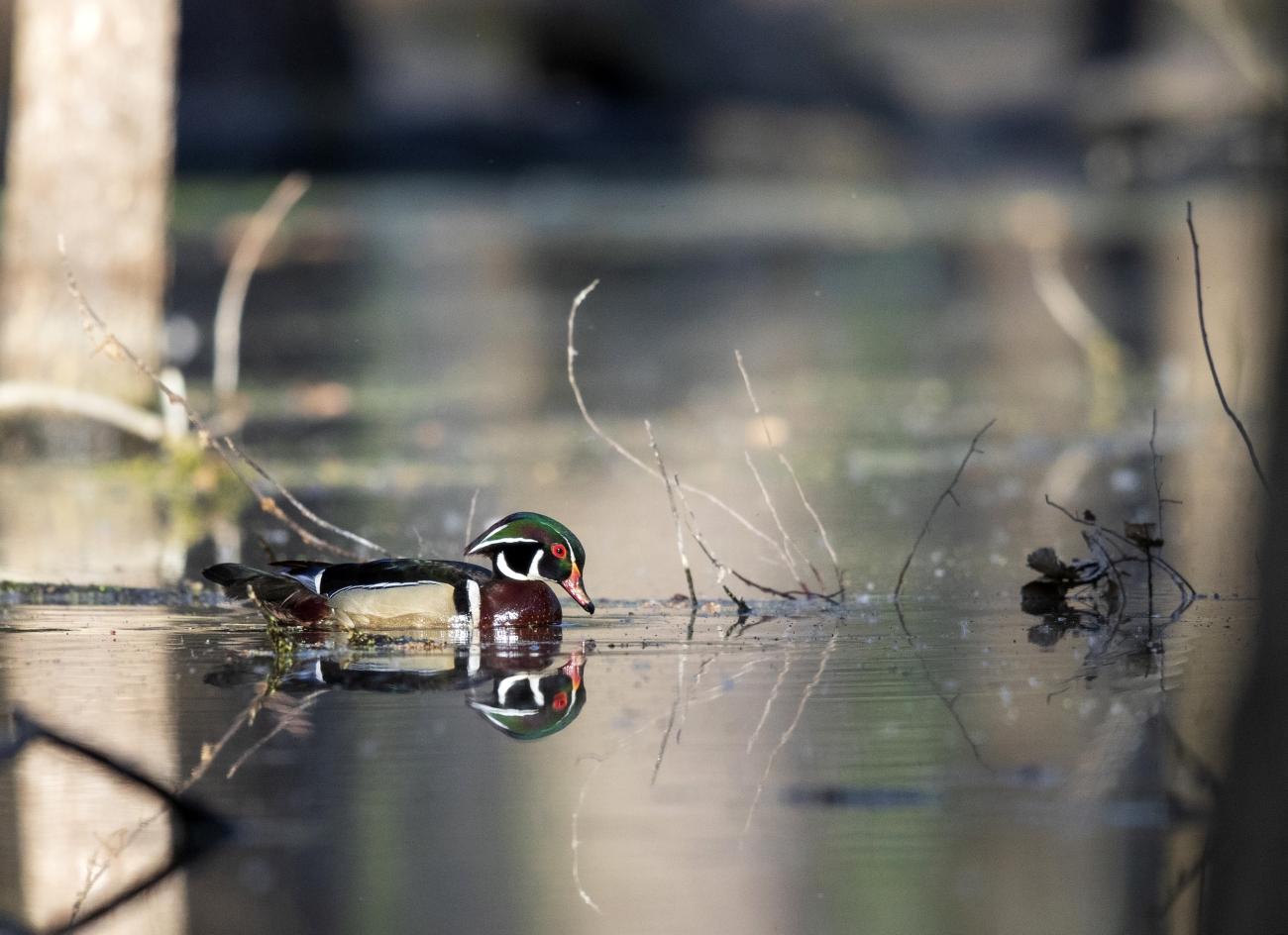A faint string of birdsong filtered through closed windows on a recent morning. It was well after dawn, but thick gray clouds made it feel like the Sun had yet to rise. “Song sparrow!” I exclaimed. “They must have arrived overnight!”
My friend, who started birding last summer, looked skeptical. “That doesn’t sound like what I remember.” He pulled out his phone and opened the Merlin Bird ID app from the Cornell Lab of Ornithology to play an example of a song sparrow’s song. The recording started with a pair of notes and then a couple more, and then devolved into a messy, buzzy trill. Outside, the bird sang with the same quality, but not exactly the same pattern.
Back in my college field ornithology class, we’d been taught the mnemonic “Maids! Maids! Maids! Put on your teakettle-ettle-ettle.” The maids representing the first notes, and the tea kettle mimicking the trill. It helped if we sounded a little like a spoiled heiress when we said it, to match the loud, brassy tone of the sparrow.
While the funny mnemonics I learned in that class were helpful, they were useless without also noticing variations in tone quality of the birdsongs. Repetition was also key. Before quiz days, we’d all sit around a tape player and listen intently to the mixtape our teaching assistant had made for us.
With song sparrows, the repetition came naturally. They are one of the first birds to return in spring. They are quite common around lakeshores, marshes, road edges, fencerows, yards, and pretty much anywhere there are some bushes and some grass. And they live up to their name, Melospiza melodia, which means “melodious singing sparrow.” One male was observed singing for 10 hours in a single day, which meant completing 2,305 songs.
With brown, white, and gray stripes on their head and breast, song sparrows resemble many sparrows who are brown and stripey, and somewhat hard to tell apart. The pattern I look for is a particularly dark spot under their chin where their chest stripes meet up. My TA taught me to remember this like the bow tie on an opera singer.
I was quite familiar with song sparrows by the time I moved from the Midwest to California in 2007, but I remember the experience of confusion the first time I heard one there. The song that emanated from a shrub in the coastal grassland of Salt Point State Park wasn’t the pattern I remembered, but the tone was the same, and my binoculars revealed the black bow tie.
As it turns out, song sparrows are widespread, and well-known to have regional accents. The variation is likely a result of picky females, who prefer to mate with males who demonstrate an ability to learn new song components from other males.
I guessed that the odd-sounding song sparrow outside the window on that gray morning was on migration to somewhere else, somewhere his accent would fit in. I also guessed that he’d been part of a larger wave of migrating birds who’d sailed in on a south wind overnight. Hoping that the rain would hold off, we headed out to Artist’s Point in Grand Marais, MN, where Lake Superior concentrates birds who’d rather not cross the open water.
Song sparrows were the first thing we heard from the parking lot, and we followed their melodies to a thicket of willows and red-osier dogwood. One sparrow swooped away with a characteristic tail-bobbing flight, landed in the top of a small tree, and belted out a few songs. Before long, though, he swooped back into the brush to join his buddies scavenging for seeds on the ground. With competing needs to refuel for the next leg of migration and to satisfy their raging hormones, the guys sang even from the middle of the thicket.
Cameras poised for the moment a sparrow posed for a clear photo, we spent several minutes there, just observing. That’s nothing compared to what Margaret Morse Nice did on May 11, 1935. On that day, she followed a single song sparrow from midnight to midnight, recording his behavior for 24 hours straight. She’s the one who observed him singing 2,305 complete songs for a total of 10 hours—which was more time than he spent roosting (9 hours) or feeding (5 hours).
That birdwatching marathon was part of an eight-year study in which Nice, both a trained zoologist and mother of five, trapped, marked, and observed 870 different song sparrows in her Ohio backyard. Before her groundbreaking work, many bird books contained “facts” conjured up by Aristotle, and the study of birds focused on “collecting” them—with shotguns.
Nice banded her birds with plastic from children’s toys and created a new standard for scientific research by observing hundreds of marked individuals over many years. In her studies, she learned to recognize individual males by their distinctive songs and pick out the phrases they’d learned from their neighbors. Her work inspired a new generation of ornithologists—and me—to be more observant.
 |
| Margaret
Morse Nice lying flat in the grass to study a nest of baby field sparrows.
Photo taken by Al Fenn circa 1956 |
Emily’s award-winning second book, Natural Connections: Dreaming of an Elfin Skimmer, is available to purchase at www.cablemuseum.org/books and at your local independent bookstore, too.
For more than 50 years, the Cable Natural History Museum has served to connect you to the Northwoods. Our Summer Calendar is open for registration! The Museum is closed for construction until May 1. Follow us on Facebook, Instagram, YouTube, and cablemuseum.org to see what we are up to.

















